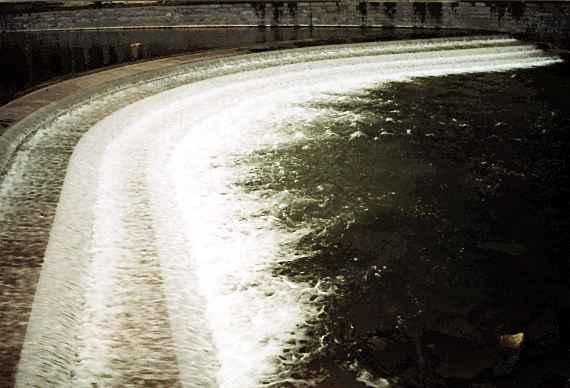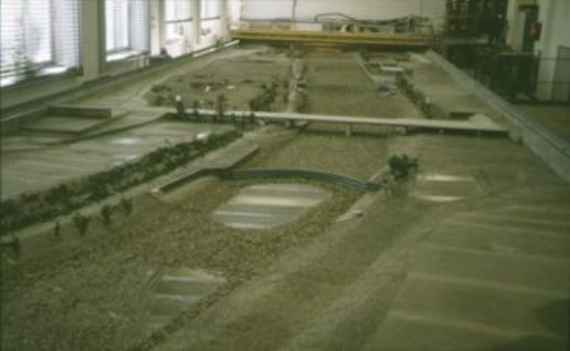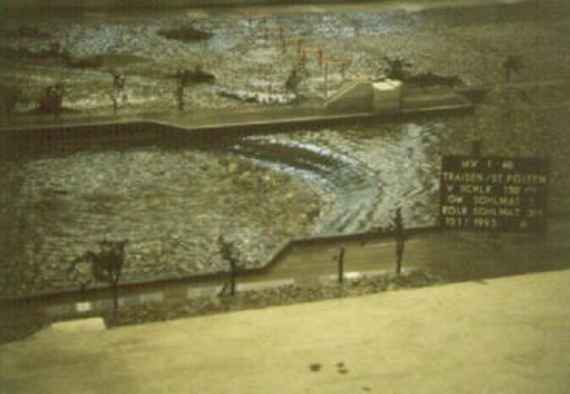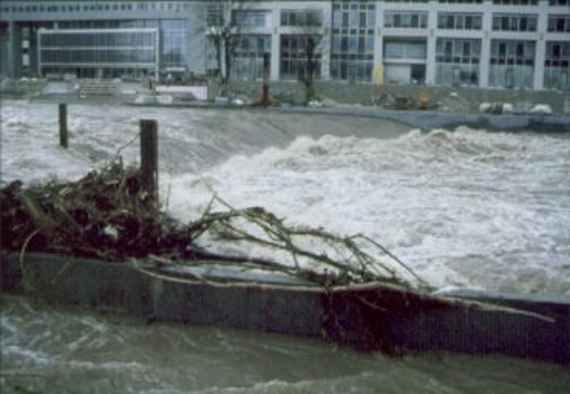At the beginning of the 20th century the Traisen was regulated in its downstream section. In order to stabilise the riverbed numerous river bed steps were constructed. Now many of these riverbed steps no longer meet the state of the art and need to be renewed.
The design of the new constructions has to consider the improvement of the flood protection for St. Pölten as well as the redesign of the river section in the area of the newly built government quarter. The new government quarter in St. Pölten is located directly on the Traisen and leads to a significant change in the flood discharge characteristics in the river section between Julius Raab bridge and the Austrian Federal Railways (OEBB) bridge. This will affect the flow conditions of the river during flood discharge and the flood safety for the adjacent settlement area.
The Institute was involved in the initial planning, the detailed design and the optimization of the two steps located in this river section. The new design has to be in accordance with design and ecological specifications, with the existing subsoil conditions and with the hydraulic requirements of the river section.
This concerned:
- The bed steps were planned as curved cascade steps so that the flow is concentrated in the middle of the river and the overflow is distributed over the entire width of the steps.
- For ecology and fish population a scour with a minimum depth of 3 m is provided in the area after the step.
- At the construction sites clayey material is located at a shallow depth below the riverbed. This material has very low resistance to mechanical stress when being under water. Therefore, measures to secure the steps and scours were necessary.
- The conversion of the excess flow energy should take place in a limited area of the new riverbed steps. This means that the water of the Traisen should flow over the steps concentrated in the river without causing serious damage in the riverbed or on the banks.
- Flood safety for the government district and the population of the town St. Pölten.
- For the improvement of the aquatic ecology the construction of an 800 m long side arm in the right foreland of the river was planned.
Physical Model Traisen / St.Pölten; view against the flow direction
Flood in the physical model
photo of the flood in 1997
-
© BAW-IWB zoom gallery -
© BAW-IWB zoom gallery -
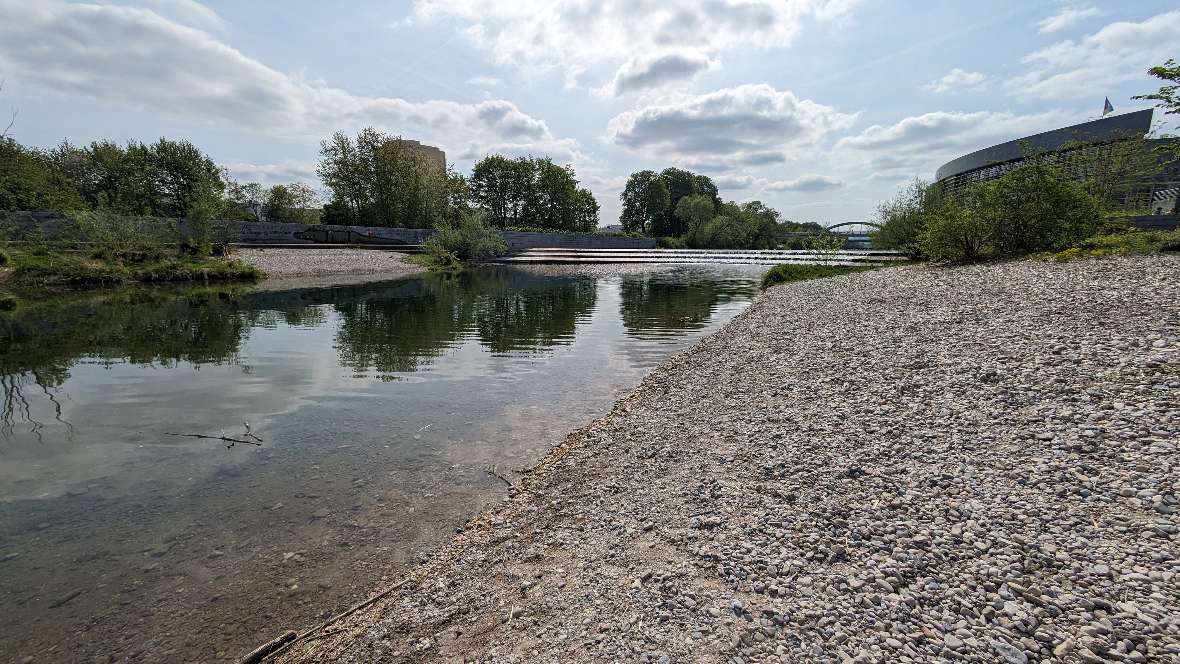
© BAW-IWB zoom gallery
The pictures show the cascade on April 11, 2024 (approx. 27 years after construction)

